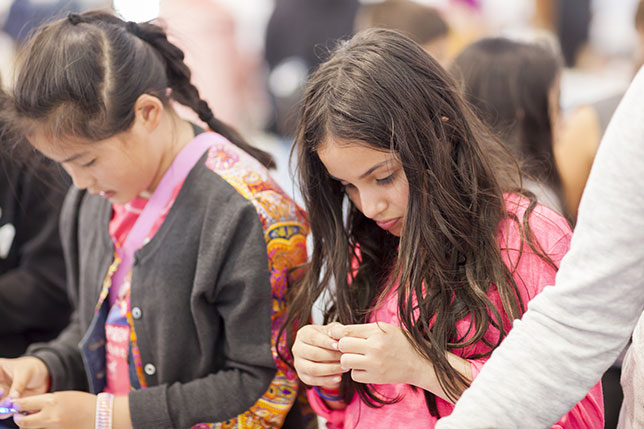Build a Makerspace That Engages Students Across Every STEAM Subject
Makerspaces can be a powerful tool to link STEM and the arts — and engage students in every subject area

To hear Melissa Fernandez tell it, siloed instruction — where subjects like science, math, and English are taught separately — might not be the best way to impart many of the crucial 21st century skills students need to thrive in today’s world.
Her solution?
Get students making more — a lot more, if possible.
Fernandez is the instructional supervisor for industrial education and technology education for the Career and Technical Education Dept. at Miami-Dade County Public Schools in Florida — and a huge proponent of makerspaces. Back when she was an engineering teacher, she turned her entire class into an instructional makerspace, and saw students bloom in ways she never could have imagined.
“STEM and STEAM are so important these days,” said Fernandez, who recently presented at the TCEA 2017 conference in Austin in a session about reimagining learning using makerspaces. “We often drive students to the idea that they're good in some subjects and not others. Makerspaces allow you to break down these walls.”
Makerspaces are big at Miami-Dade, which even designates certain schools as STEM- or STEAM-focused. “It looks at how schools integrates either STEM or STEAM,” Fernandez said of the designation. “Those schools are generally more successful at grabbing student attention, and creating spaces that grab that attention.” The district is even partnering with a company called United Data Technologies, or UDT, which has helped design makerspaces with Miami-Dade and helped to provide some of the high-tech equipment.
While Fernandez admits that disparities such as gender gaps and students' dislike of certain subjects can be a serious problem, she says makerspaces help bridge these gaps. "As you create more of these learning spaces, you see more girls join, especially in hard science areas. You're not just learning 3D CAD to design a building," Fernandez said. "You're using it to create a vase or a toy or anything. It's open-ended."
One teacher Fernandez worked with ran a successful makerspace with a robotics and engineering focus that drew in top-tier students, who often took many AP classes. One student, who was not a strong reader and often struggled in his classes, had strong design skills and was encouraged to join the team. “He quickly started to grow and develop with those AP students,” Fernandez said. “He told his teacher: ‘Nobody has ever valued this about me before.’” By the end of his senior year in high school, he was taking advanced and AP science classes, receiving support from his robotics club peers in exchange for him supporting other students in their design skills.
“Collaboration and contribution are soft skills,” Fernandez said. “Students naturally pick these skills up in a makerspace environment. They need to work together to be successful.”
In another project, hard-science students at one Miami-Dade school used their makerspace during the school day to work on a project that linked Mark Twain’s Huckleberry Finn to their engineering class. Students were asked to physically build something that tied into the novel and then present it to their class. Students ended up building large rafts out of timber, and becoming more involved in the novel than they ever would have been previously, Fernandez said. “It gives students a hook,” she said about makerspaces that work across subject areas. “Or, rather, we let the students give us the hook. It allows them to latch on to those pieces that are important to them.”
Top Questions
When preparing a makerspace, Fernandez and a UDL rep recommended a few crucial questions for schools to consider:
- What are the goals of the space?
- Who are the key personnel and what are their roles?
- Where will the space be located?
- How will the space be utilized by teachers and students?
- How will we know if the space is an effective learning tool?
- How will we fund our materials and supplies?
- How will we sustain the program?
Fernandez also stressed that makerspaces come in all shapes and sizes, and that there’s no one-size-fits-all model. “Media centers make a fantastic space, and they’re underutilized,” she said. “You can also take a classroom and turn it into a makerspace. You can turn a mobile cart into a portable makerspace to take into classrooms.”
Above all, the space should reflect the school’s needs.”Makerspaces that function as special projects and after school programs are not going to look the same as those that instructionally based during the day,” Fernandez said. “Equipment is important, but, really, what is the philosophy of the space?”
About the Author
Stephen Noonoo is an education technology journalist based in Los Angeles. He is on Twitter @stephenoonoo.